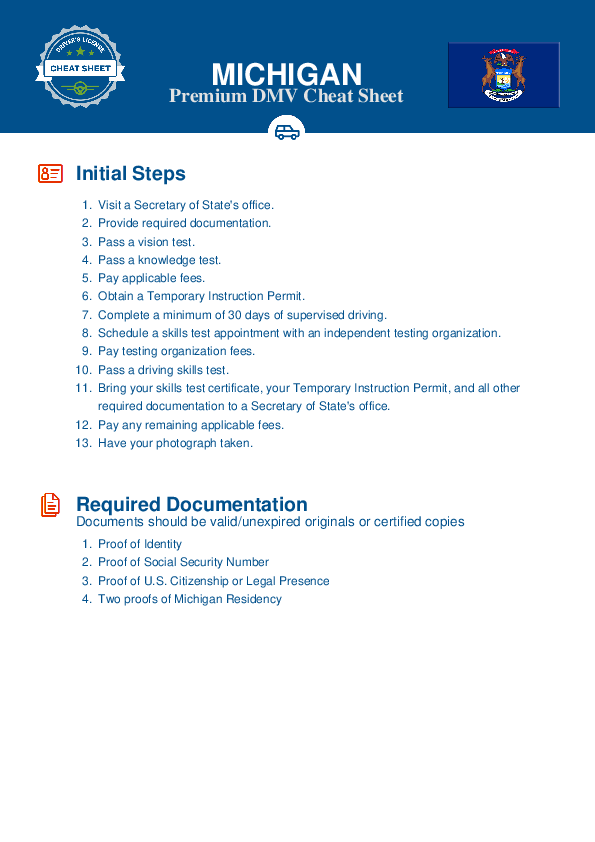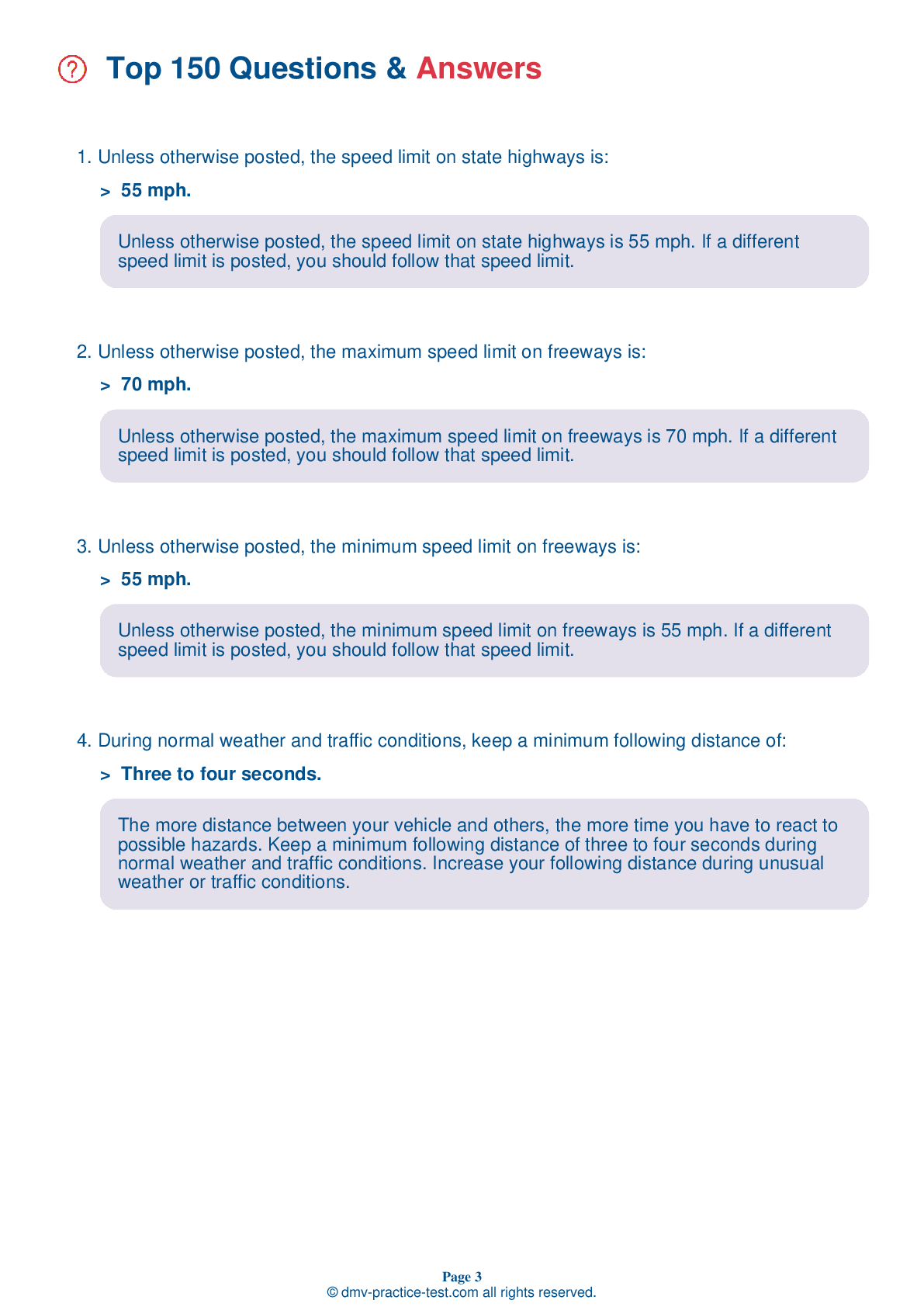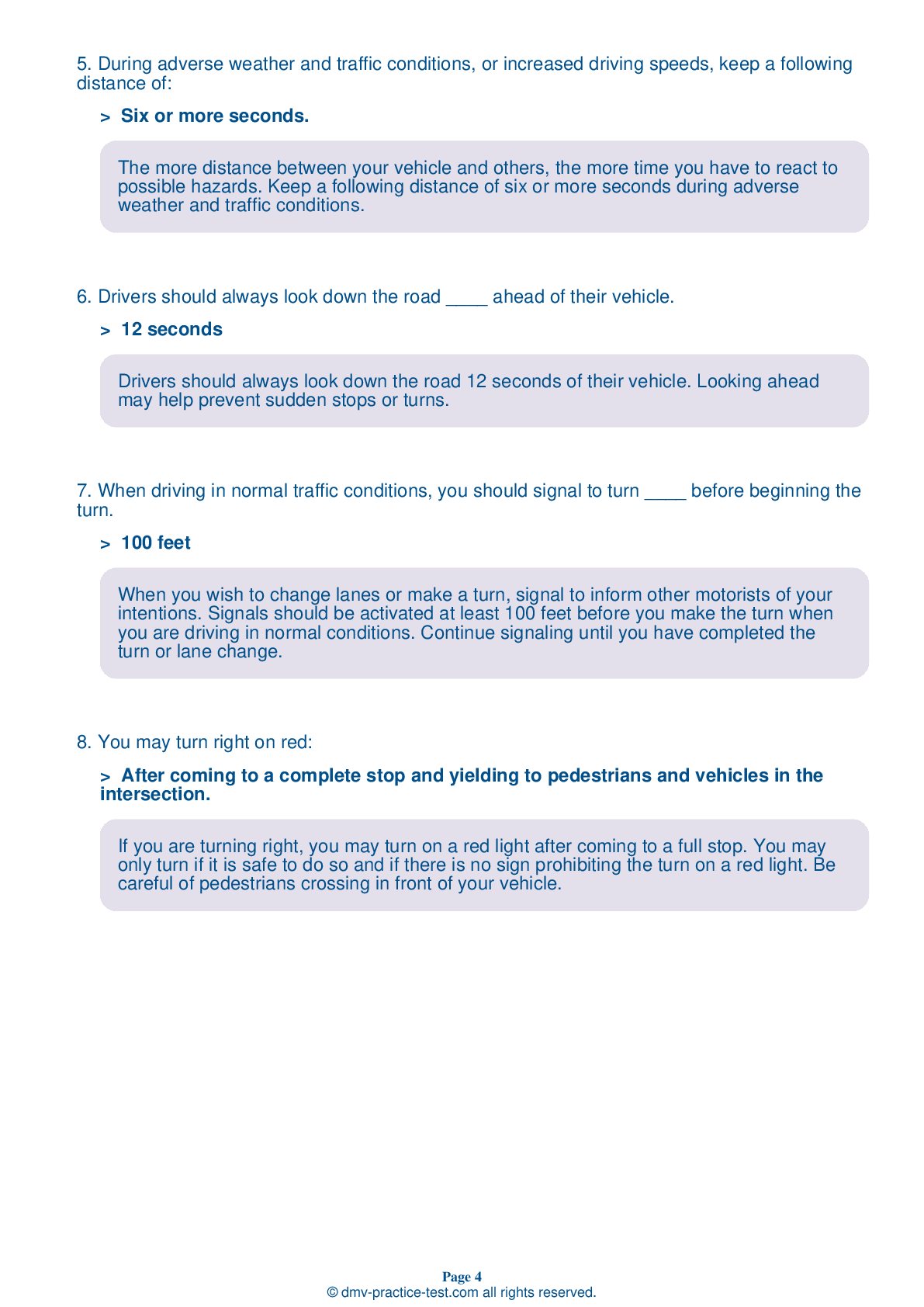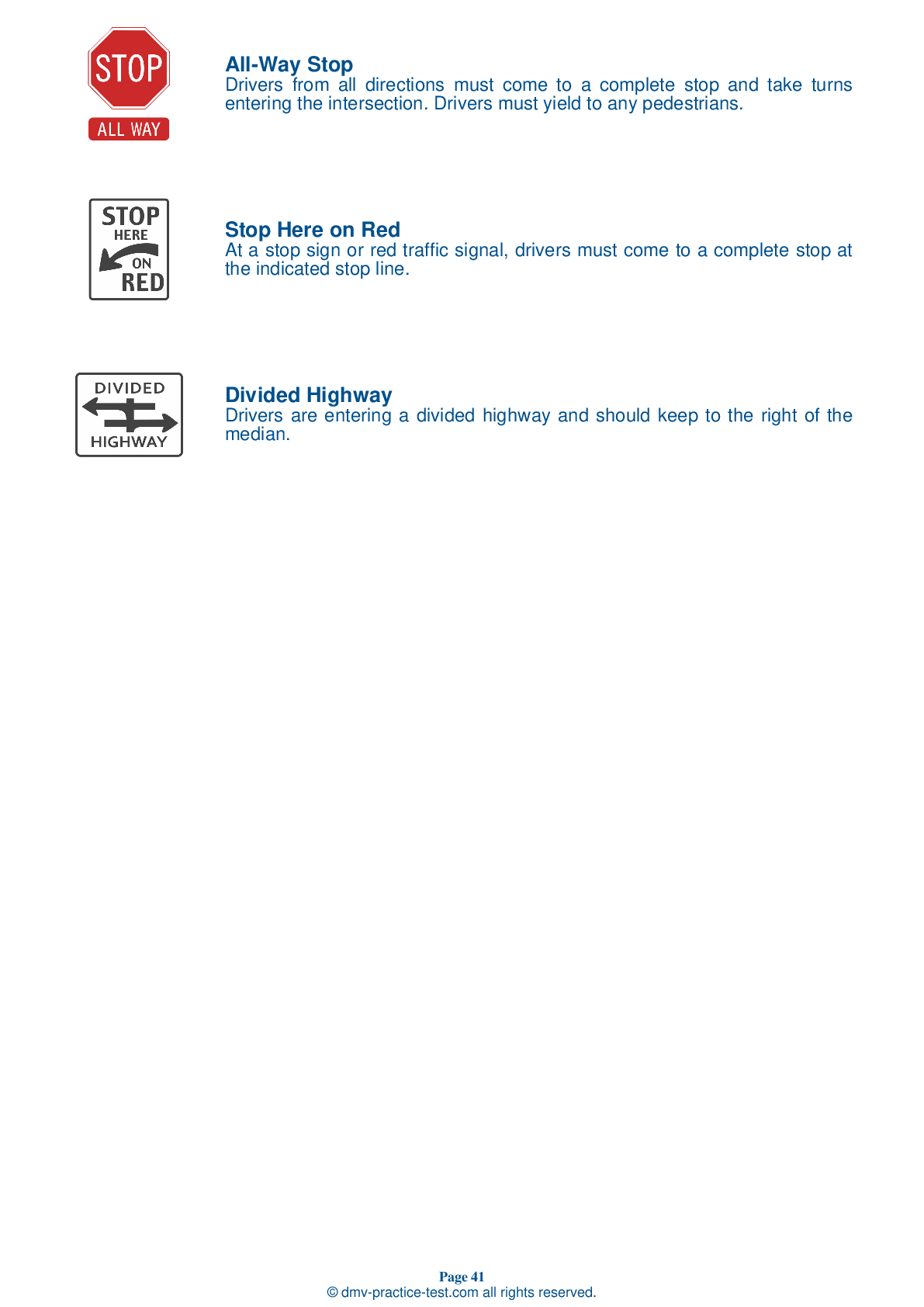FREE Michigan DMV Practice Test #19 Page 2 of 7
The practise exams for the Michigan DMV have been updated for January 2025. It comprises questions based on the most important traffic signals and regulations for 2025 from the Michigan Driver Handbook. To study for the DMV driving permit test and driver's licence exam, use actual questions that are very similar (often identical!) to the DMV driving permit test and driver's licence exam.
Each question on the practise exam has a tip and explanation to help you recall the ideas. Questions about traffic rules, traffic signs, and driving statutes, as well as knowledge from the Driver Handbook, will be included in the written portion of the official Michigan DMV test.
You must properly answer 40 of the 50 questions to receive a passing mark. Take our Michigan DMV practise exam to help you prepare for your instruction permit or driver's licence.
The DMV exam is offered in a variety of languages.
Using any form of testing help will result in an automatic fail, and the DMV may take further action against your driver's licence, so avoid it.
8 . At an intersection with a yield sign, you should:
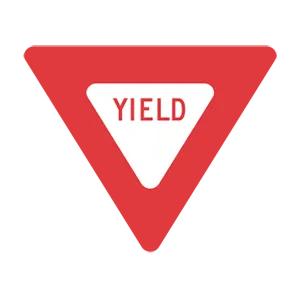
A yield sign means that you must slow down and yield the right-of-way to traffic in the intersection or roadway you are entering.
9 . This sign means:
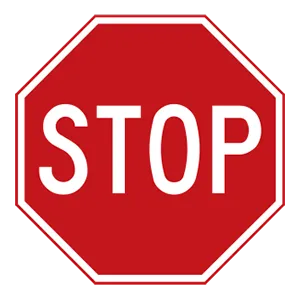
Eight-sided traffic signs warn drivers that they must stop and yield the appropriate right-of-way at an intersection. Drivers may proceed when it is safe to do so.
10 . If an aggressive driver cuts you off, you should:
If an aggressive driver cuts you off on the roadway, stay calm and get out of their way. Trying to get even with an aggressive driver risks escalating the situation and increasing the danger.
11 . When driving in normal traffic conditions, you should signal to turn ____ before beginning the turn.
When you wish to change lanes or make a turn, signal to inform other motorists of your intentions. Signals should be activated at least 100 feet before you make the turn when you are driving in normal conditions. Continue signaling until you have completed the turn or lane change.
12 . When approaching an accident scene, you should:
Do not stop at an accident scene unless you are involved or emergency help has not yet arrived. Keep your attention on your driving and keep moving, watching for people who might be on or near the road. Never drive to the scene of an accident, fire, or other disaster just to look.
13 . This sign is used to prevent:
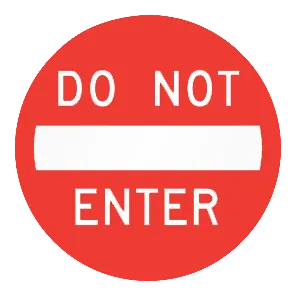
This sign warns that a road has one-way traffic and you must not enter from your current direction.
14 . If you need to stop quickly and your vehicle is not equipped with an Anti-Lock Braking System (ABS), you should:
Pumping the brakes is generally the best way to stop a car in an emergency. The car will stop quickly and you will also be able to continue steering.
Need Car Insurance? No problem!
Compare the best rates in Michigan and find a personalized policy that meets your needs.
1. Are You Currently insured ?
2. Married ?
3. Do you own your Home?
4. Do you have more than 1 car ?
5. Have you or a Family Member Honorably Served in U.S. Military ?
6. Your Name
7. Age
8. Zip code
IMPORTANT REMINDER:Auto Insurance is Mandatory to drive in Michigan. Get covered before you hit the road to avoid any fines.
Ranked by best match
